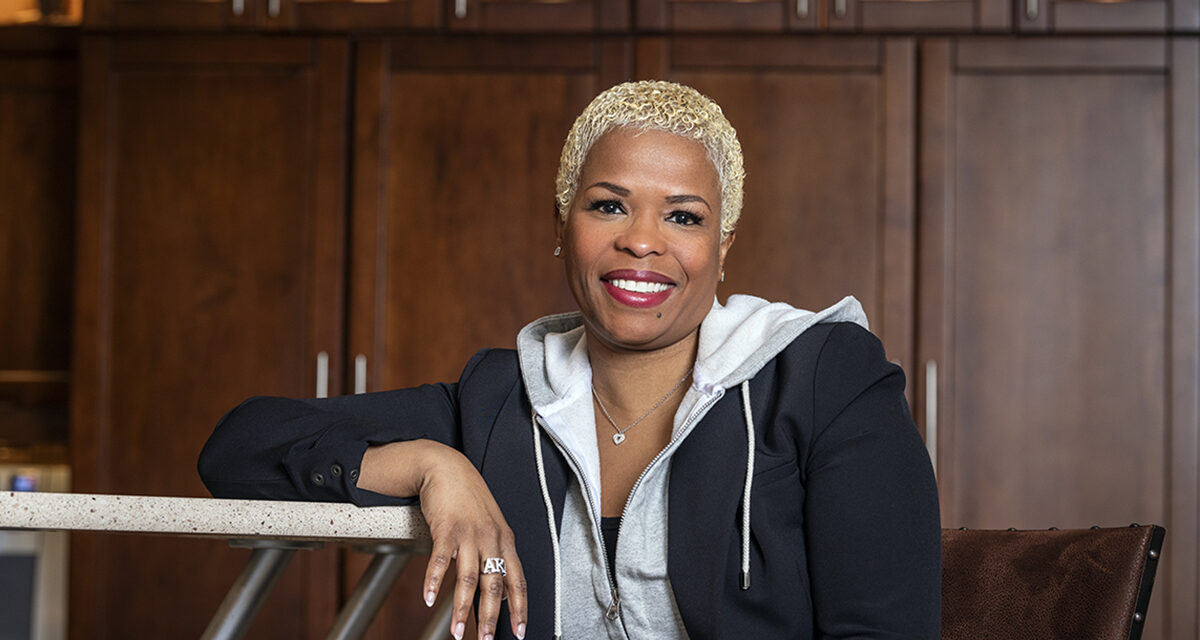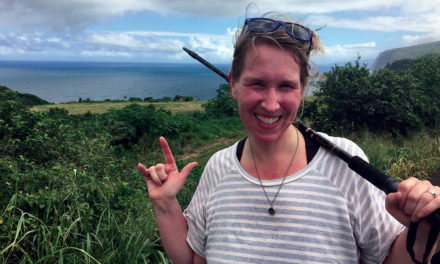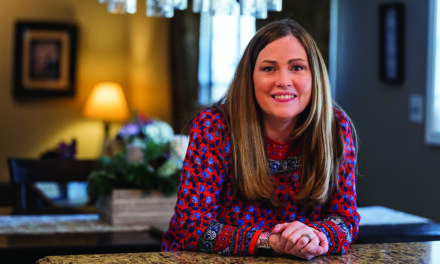The 39-year-old is leading DiversityInc’s charge to reshape the workforce, evaluating companies on their diversity practices and challenging them to become more inclusive.
Carolynn Johnson is on her fifth pair of glasses. When she bought the original pair, she loved them, so she let the vendor know she’d likely be calling him soon for a replacement when she inevitably misplaced them. “Rule number one. Know thyself,” she says.
As CEO of DiversityInc, knowing herself really matters, as she works to impart the importance of seeing people, not race, gender, ethnicity, disability, or sexual orientation. Born and raised in Scotch Plains, NJ, the 39-year-old works to help companies and corporations make their workplaces more inclusive, encouraging them to think of diversity as more than a numbers game. Each year since 2001, DiversityInc assesses companies based on diversity practices and leadership accountability, compiling a list of the top 50 nationwide.
Her leadership of DiversityInc, which she describes as a mission, comes at a time when societal change is in high demand and people are speaking loudly and publicly about inequities. “Things happening in the public eye—women’s soccer demanding equal pay, a track and field star coming out against Nike for its treatment of her maternity leave—are making an impact. It’s helping people who have always been scared to speak up because we get courage from other people’s actions,” Johnson explains. “I also think it is making leaders double back and look at their policies and practices, to make sure they are not the next Nike or the next Papa John’s. So, when people speak up, when people defend themselves, and when people fight for their rights, I think it makes everybody wake up.”
Johnson points to another high-profile, instructive moment in which two African American men were arrested at a Philadelphia Starbucks 2 years ago for no apparent cause, raising the question of bias within the popular coffee chain. “It was a great example for what people, namely CEOs and boards of directors, should not do,” she says. “And that is to take a problem that is centuries old and say that we are going to deal with it over 2 weeks, especially something as complex and deeply rooted as implicit bias.”


Women, you don’t always have to wear the navy blue, the black, and they gray. You can come to work as your colorful, girly self, and that’s all right because your perspective is valuable in the boardroom where you might be the only one with all that color.
A Numbers Game
DiversityInc assesses performance in six key areas of diversity and inclusion management:
• Human Capital Diversity Metrics: Gender and racial/ethnicity breakdown of representation in overall workforce representation, overall management, senior management, new hires, promotions, and 10 percent highest paid populations
• Leadership Accountability: CEO/senior leadership commitment and accountability, board of directors, office of diversity and inclusion, diversity council practices, and representation metrics
• Talent Programs: Employee resource groups, mentoring, high potential and sponsorship programs, practices, and participation metrics
• Workplace Practices: Talent acquisition, talent management, onboarding, diversity training, workforce development and engagement, LGBT, people with disabilities, military community and employee benefits policies and practices
• Supplier Diversity: Spend with companies owned by people from underrepresented groups, accountability, and practices
• Philanthropy: Contributions to nonprofit organizations focused on people from underrepresented groups, employee
volunteerism, and matching gift programs and practices
The Big Picture
Growing up in the 1980s in white suburbia, Johnson had a distinct vantage point that helped lead her to where she is now. Her family was thriving—her father made a good living as a crane operator, and her mother was a stay-at-home mom, but Johnson regularly had the experience of being the only black person in the room. For Johnson, that led to a practice now known as code-switching (also called covering), which means interacting in different ways, depending on the social context. “In practical terms, it means that when you’re in a room and someone is saying or doing something wrong (and everybody in the room knows that it’s wrong), and you’re silent because you don’t want to lose your spot or because you don’t want to seem like you’re against the team,” Johnson explains. “The other part of it is realizing that just because you’re different, doesn’t mean other people are better than you. We are all equal and great in our own ways. And embracing that, you just feel better about yourself.”
Based on her own experience, Johnson understands firsthand how important it is for companies to enable employees to be authentic and show up as their whole selves at work, instead of code-switching or covering. She points to fortune 500 leaders like Randall Stephenson, CEO of AT&T, who talks openly and unapologetically about gay rights. “We need leaders who are willing to talk about the things that they were scared to talk about before, or that their board would really come down hard on them for talking about.”
Much like society as a whole, Johnson says many companies aren’t as far along in creating a diverse and inclusive environment as they need to be, which she knows because her company sees and dissects all the metrics and analytics firsthand. “I don’t believe in unconscious bias. I believe in cultures where people are used to getting away with things,” Johnson explains. “I think that as a leader you have a responsibility to have people around you that are different than you so that you always have somebody to call on to gain an understanding of a different perspective.”
While DiversityInc’s mission to create more inclusive corporate environments is a passion project for Johnson, the approach to creating the top 50 list is careful and methodical, with her team evaluating almost 2,000 submissions from companies nationwide on a survey with more than 200 questions. The questionnaire is designed to uncover everything from female representation in management to ascension in the company among blacks and Latinos. It uncovers gaps in leadership accountability and reveals how much of a company’s policies are indicative of underlying culture and how much is window dressing.
All the metrics and information are processed for one overarching goal—to see how companies stack up in the marketplace when it comes to creating inclusive workplaces. “What I have seen through all of this is that you cannot stop measuring, because society’s general perception of how far we’ve come is not supported by the numbers,” Johnson says. “We can feel great about where we believe we are, but if the numbers don’t support that feeling, then you must do something differently.”
Next Steps
Diversity and inclusion (D&I) is often misinterpreted as affirmative action, but Johnson says it’s much more about creating healthy work environments and practices in which people can thrive and be authentic. “You can call it whatever you want, but if people are not treated fairly, and people are not taken care of, if their psychological safety is constantly in danger, we are no closer to the American dream than we were before Barack Obama swore in, in 2008.”
As further proof that we are not “there,” Johnson points out that women are earning more degrees than men right now (53 percent), but only makeup 20 percent of management among corporations nationwide. “Why aren’t we taking up half of the board seats, instead of one or two women being on the board, and not chairing any major committees, like compensation, or audit. Why is that okay?”
If she has it her way, Johnson will eventually work herself out of a job. She would feel incredible satisfaction if, at some point in the future, the workforce and leadership was representative of the population of the country. “I would love for that to be the case. I would love for women not to feel that they have to get permission from their bosses to start a family,” Johnson says, pointing to her own decision to have two children (a boy and a girl) with her husband without having to consult her employer. “I would love to know that in certain regions of this country more than half of black people don’t people feel discriminated against at work.
I would love for that to be the case, but we’re not there yet. But that’s the goal. I would love to work myself out of a job and close the doors to DiversityInc and just say, Our job here is done. Until it is, I will keep working.”






